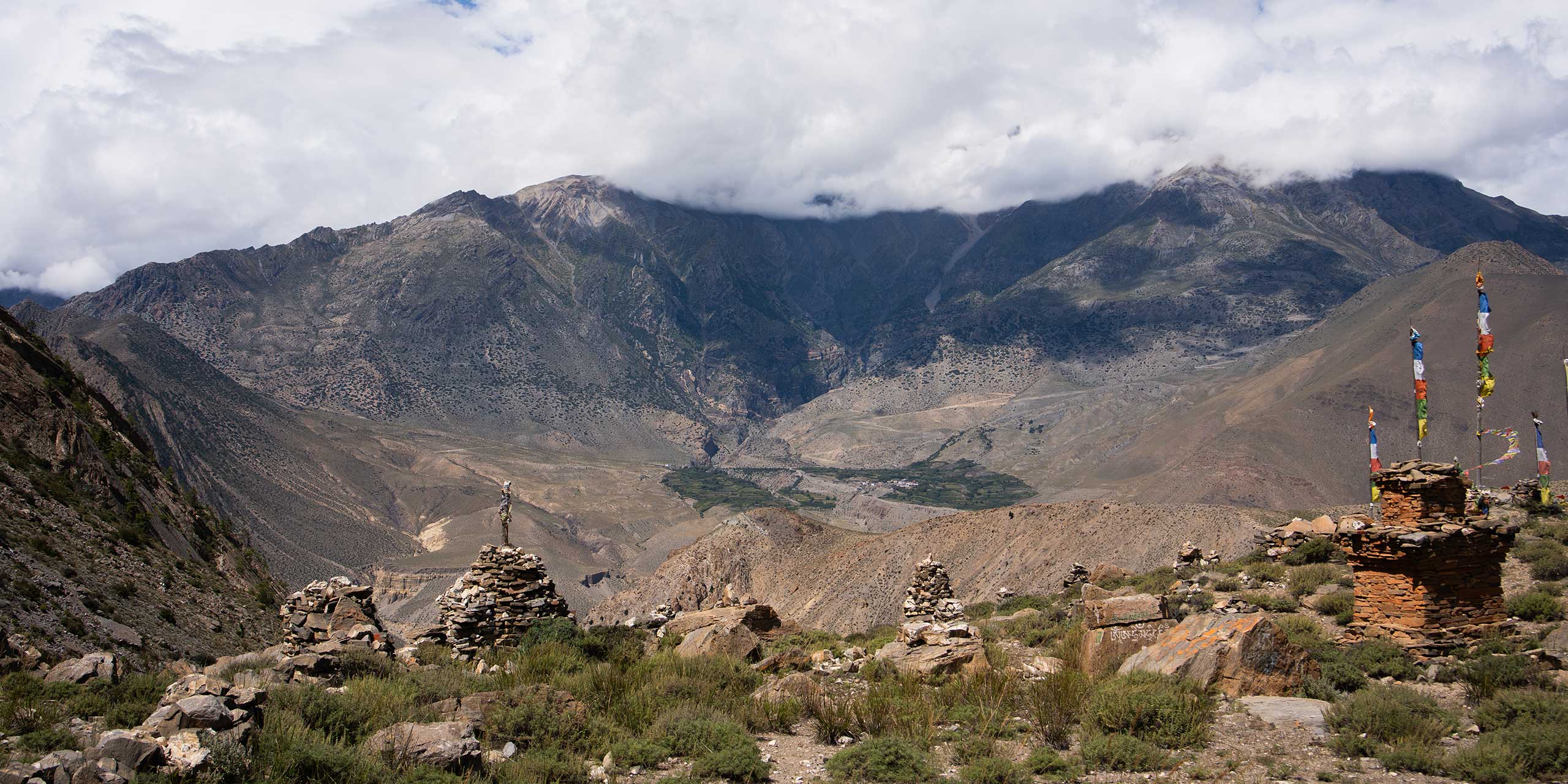
Jomsom has been a base for adventure travelers in Nepal for generations. But there’s a new reason to visit these days: Shinta Mani Mustang.
Only a few months ago, the third edition in Bill Bensley’s Shinta Mani line of remarkable properties opened seven hairpin bends above Jomsom airport.
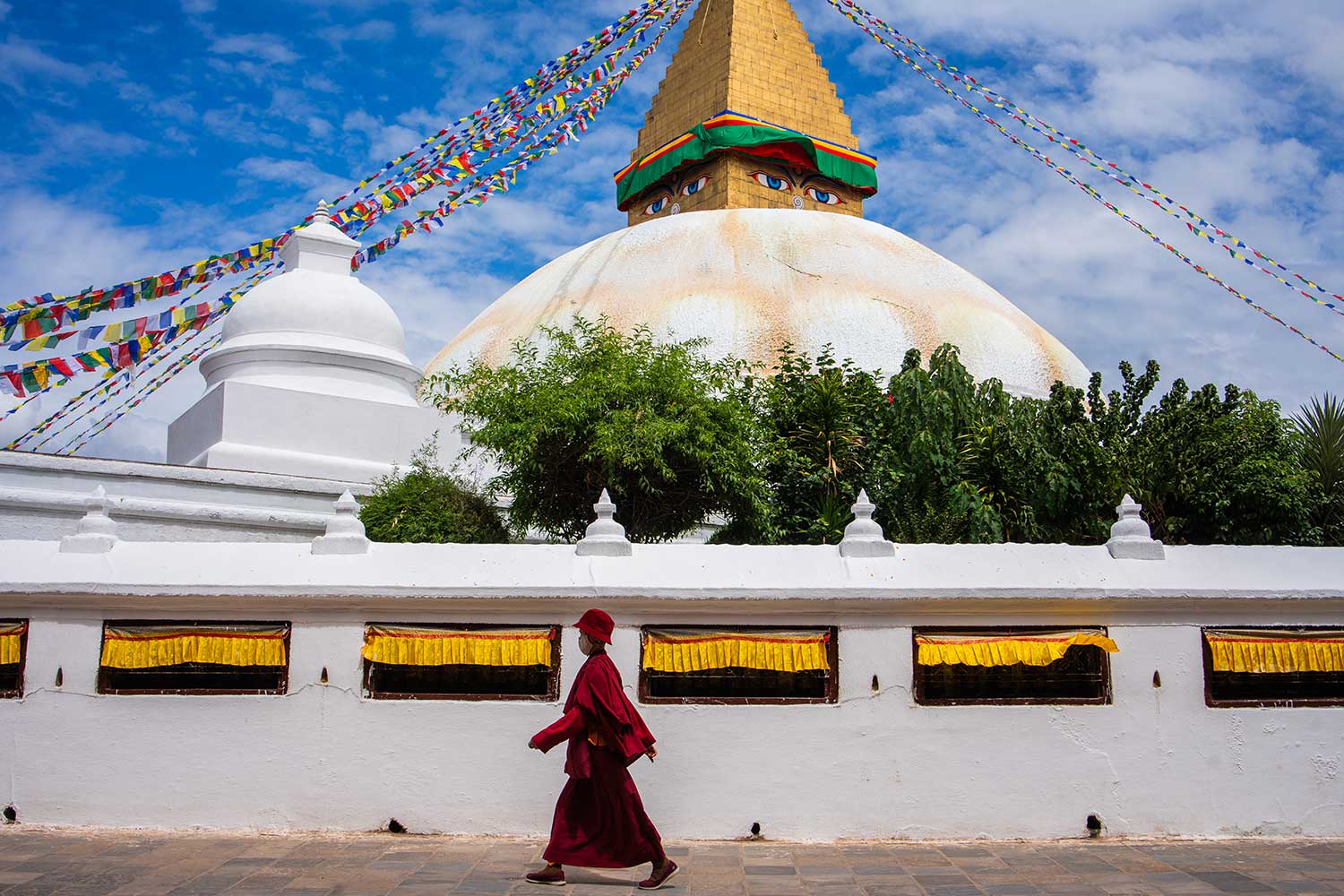
This is the first proper luxury hotel in Jomsom. The lack of an overland route until over a decade ago means that logistics have kept the stays here rustic. Even now, the one road to Jomsom is extremely rough, making it even more remarkable that Shinta Mani Mustang exists.
“Because the Mustang valley has just recently been opened by the simplest roads, the monsoons have caused havoc with landslides which frequently close the roads and shut down our supply lines,” Bensley told Travelogues after the opening of the hotel.
For the first time, there’s a design-forward hotel boasting tasting menus, fulsome views of the snowy Annapurna range, and expert-led excursions.
Above Jomson
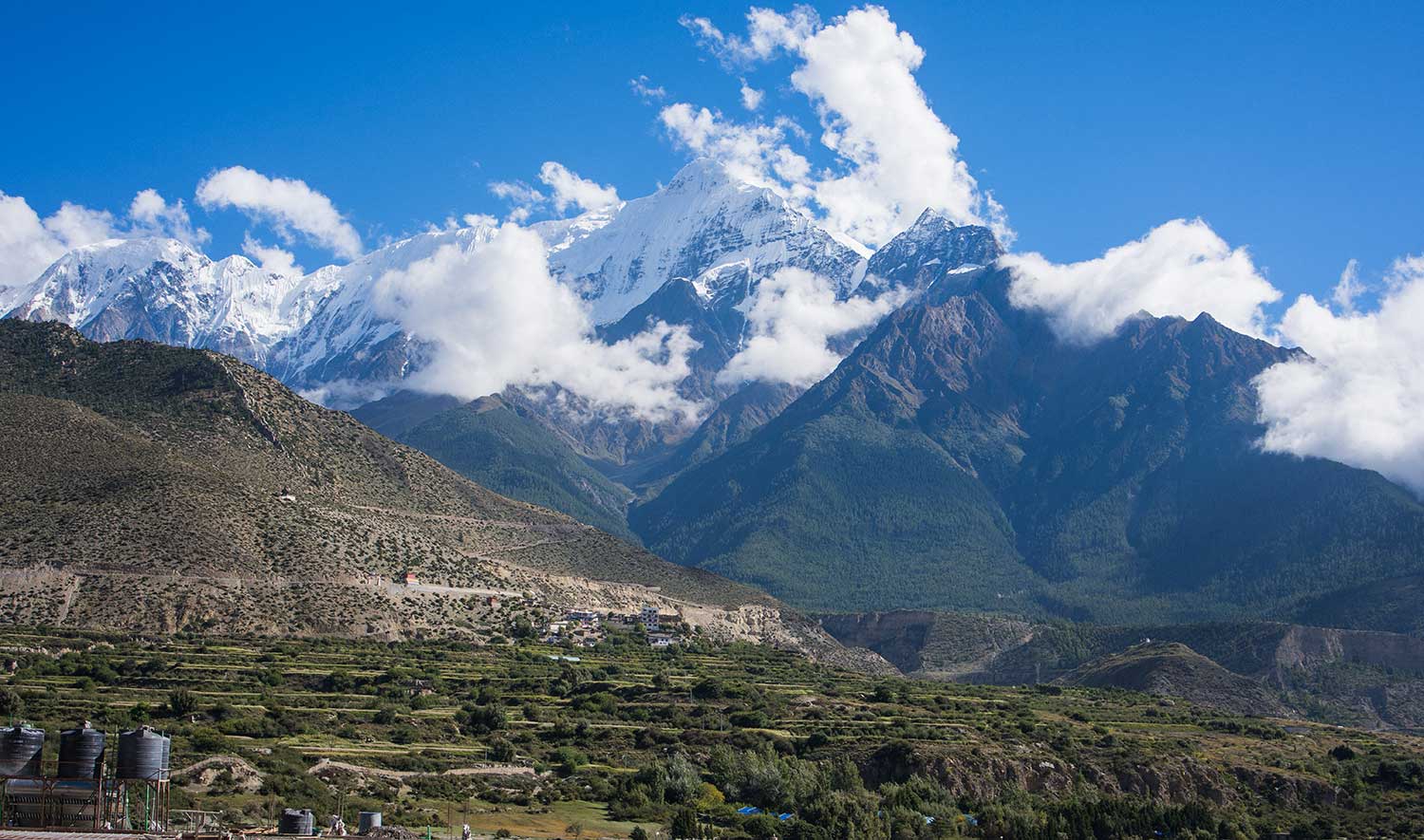
Whether you’re arriving by helicopter or motorcycle, Jomsom is a shock. Most of Nepal is green. Here, in the Annapurna range at 2,700 meters, stark, desiccated mountains are hemmed in by junipers beneath the snow-capped Himalayas.
Even just 20 kilometers away, the mountains burst with soft pines and verdant grass. Jomsom, however, is a world of clear skies, dust, and scrub.
It’s a short but steep drive to the entry of this new luxe hotel from the airport—but what an entry. The vista, weather permitting, is an unobstructed view of the snowy Himalaya peaks, and you are greeted by a golden yak and stupa festooned in prayer flags.
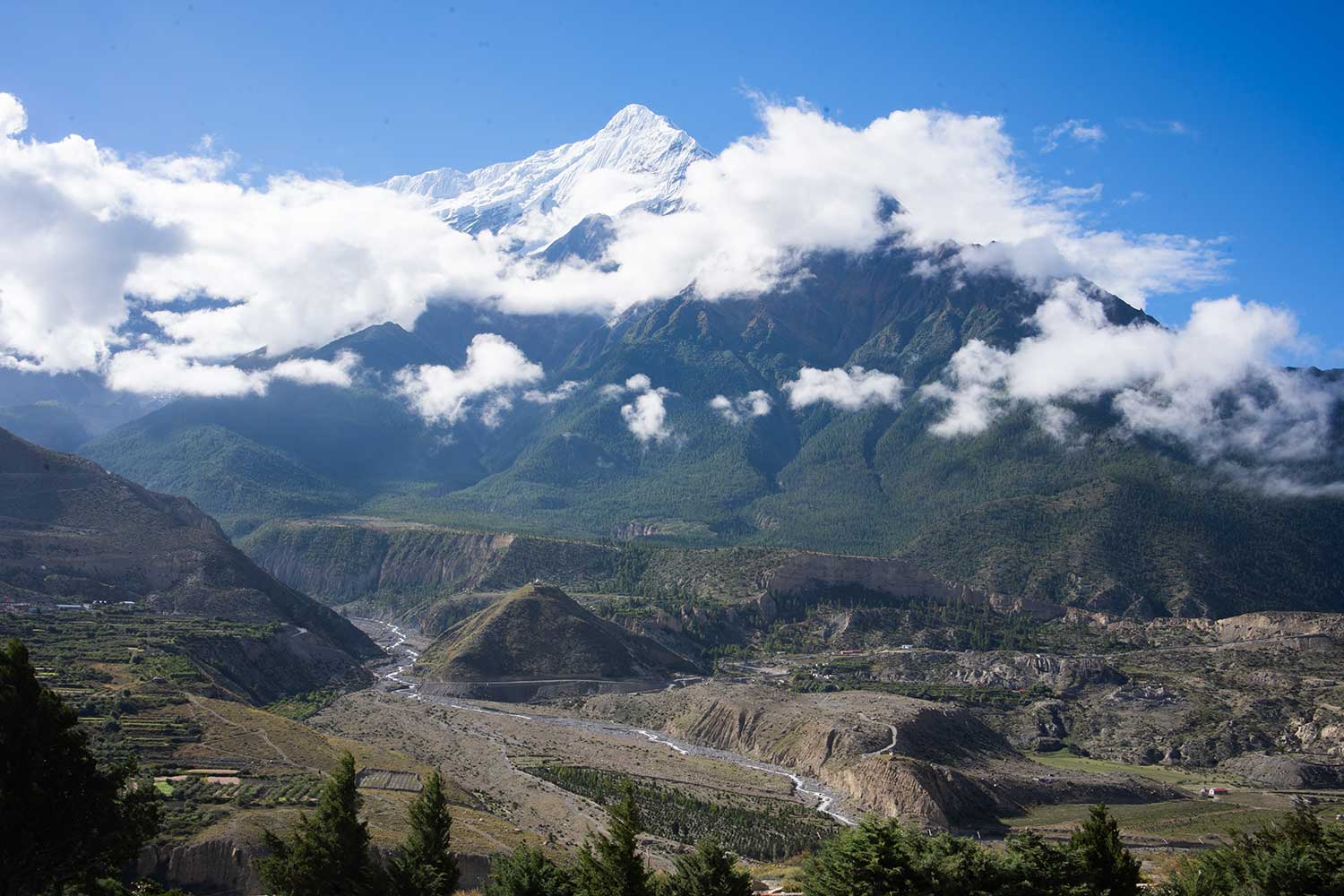
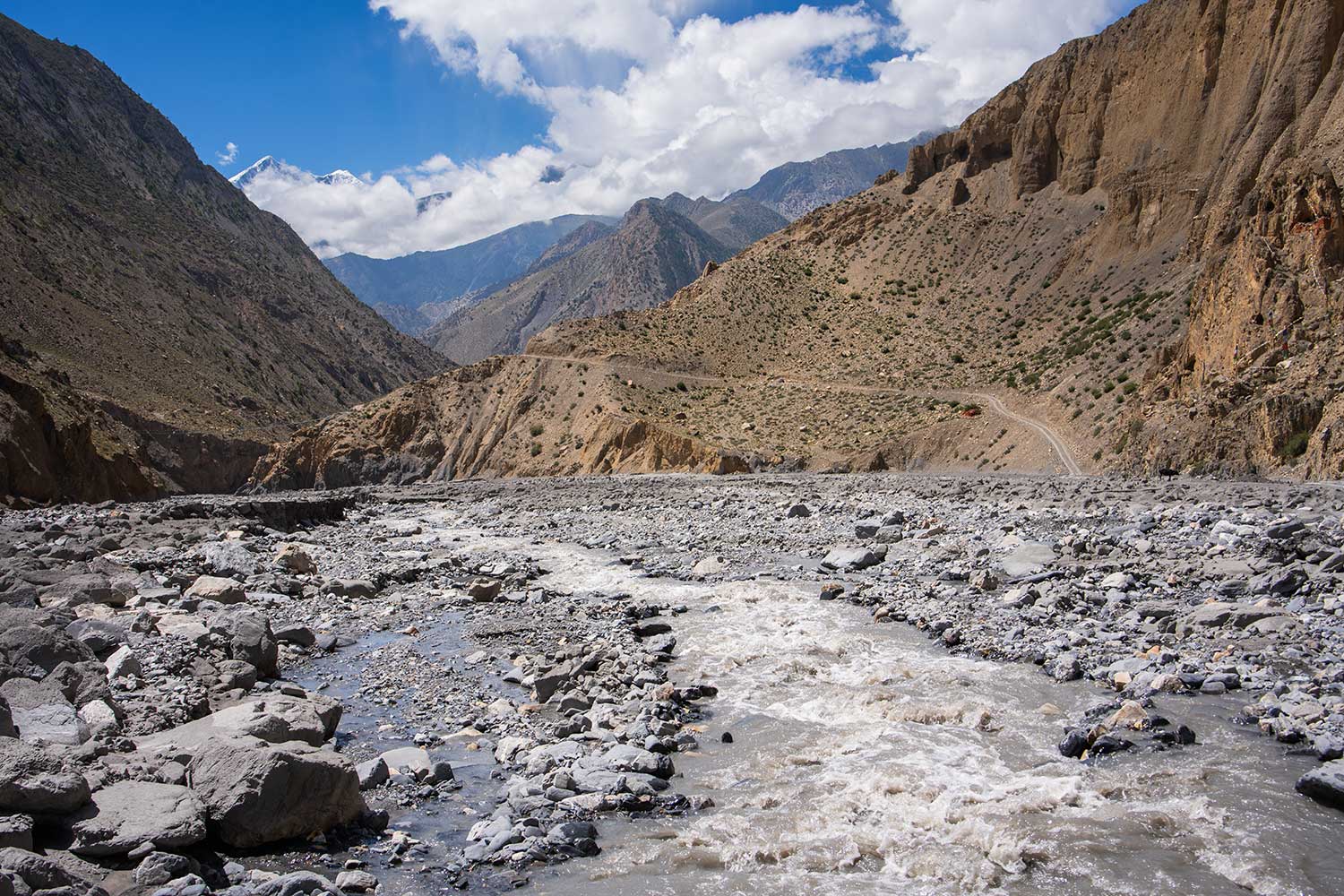
The mountains that will define your periphery are the three peaks of Nilgiri, reaching more than 7,000 meters into the sky. Below sits the sleepy town and apple orchards of Jomsom as well as the mighty Kali Gandaki River. It’s from this angry waterway that Shinta Mani Mustang draws its exterior look.
The grayish bricks of the hotel rise from the tawny earth from the Kali Gandaki, a waterway that runs from Mustang meltwaters in Mustang all the way to India in the south. Filled with the eroded granite of the ever-growing Himalayas, these waters run white, gray, and fast. It’s that same granite you’ll find in the bricks that make up the Shinta Mani Mustang. Whether it’s your first time in Nepal or the 10th, it’s immediately evident that this is something completely new.
The Magic of Bill Bensley
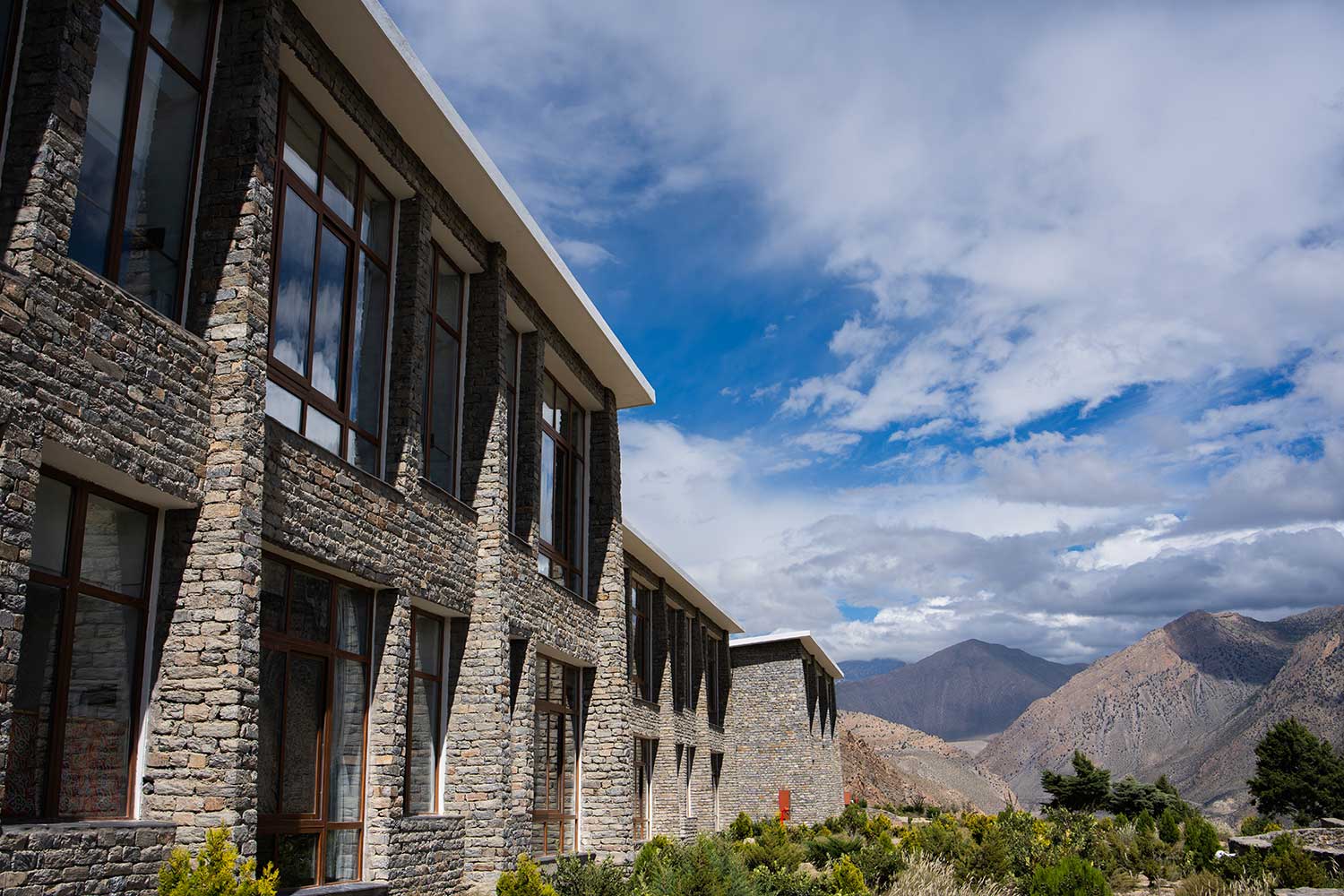
The clover-laden outdoor entrance corridor opens plush surrounds and floor-to-ceiling windows letting the Himalaya views in from every angle. The lobby evokes warmth (literally and figuratively) that’s something of a surprise from the dramatic-yet-elegant exterior.
The new Shinta Mani Mustang came about by taking over the old Jomsom Mountain Resort area which would become the Moksha Mustang with architect Prabal Thapa before the reins were handed to Bensley. Inside is where Shinta Mani Mustang really shines.
The sharp, dramatic aesthetics of the exterior are juxtaposed to the courtly lodge-style interior, awash in light, bright and dark wood accents, and high ceilings. All the 29 exclusive rooms at Shinta Mani Mustang feature views of the peaks—and the sheer height of the interior makes it feel like the mountains are part of the decor.
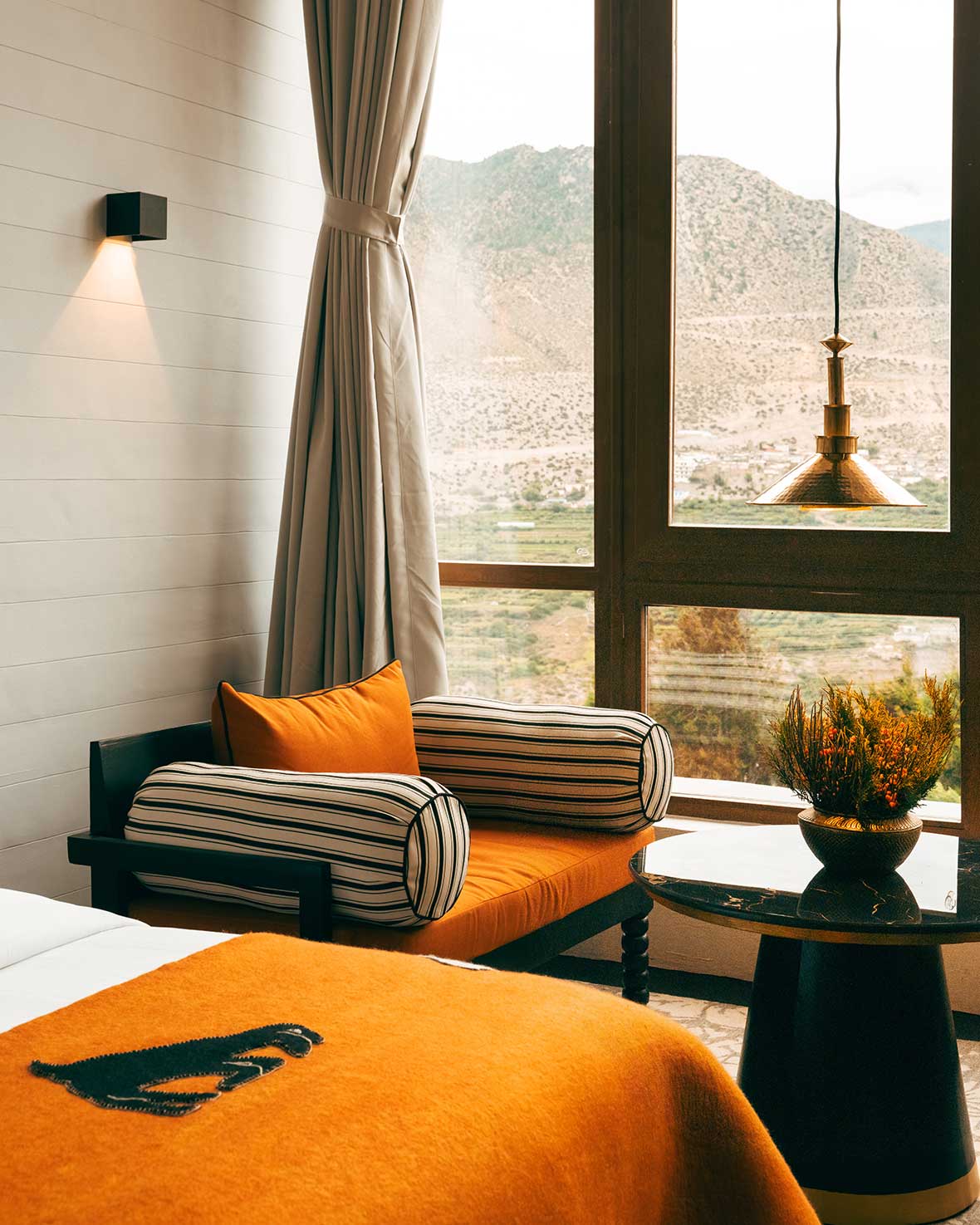
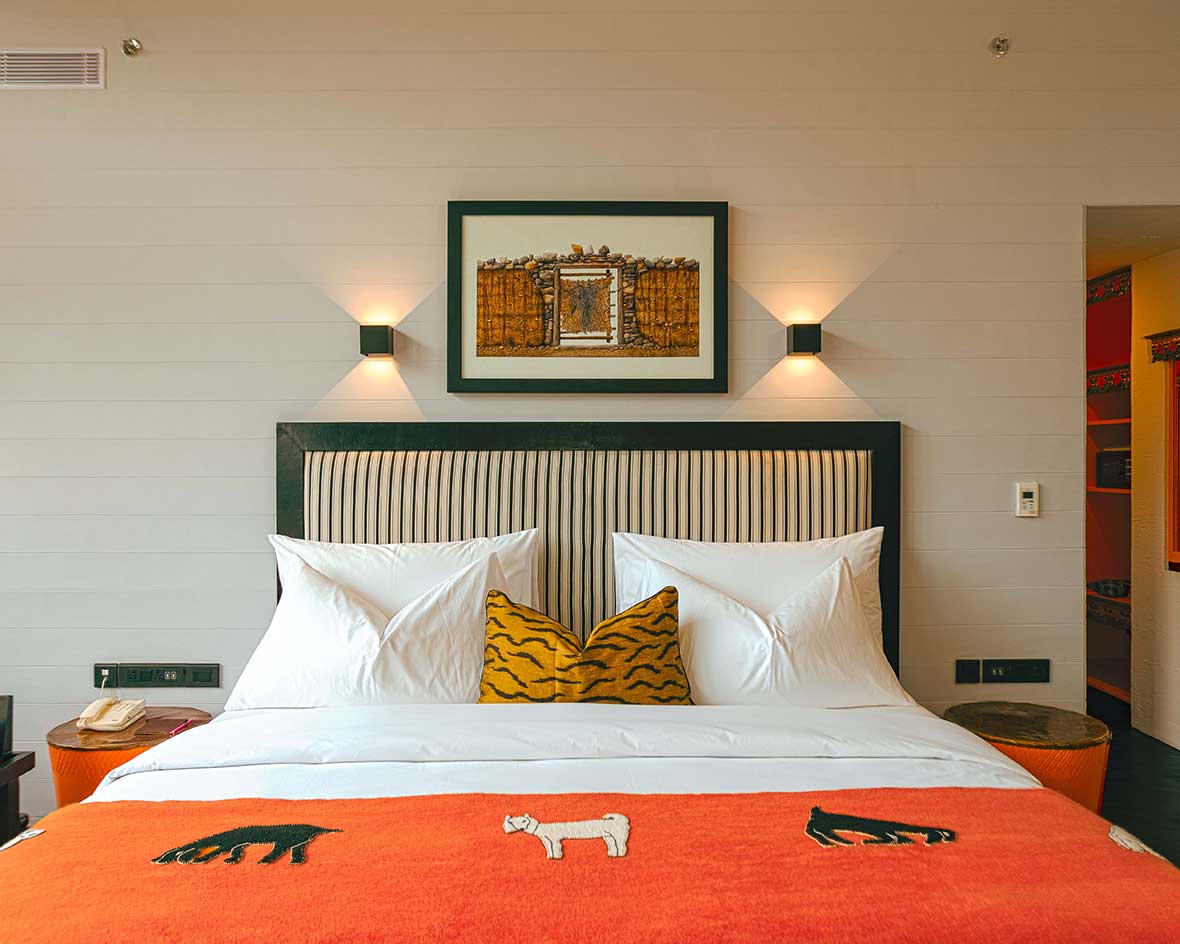
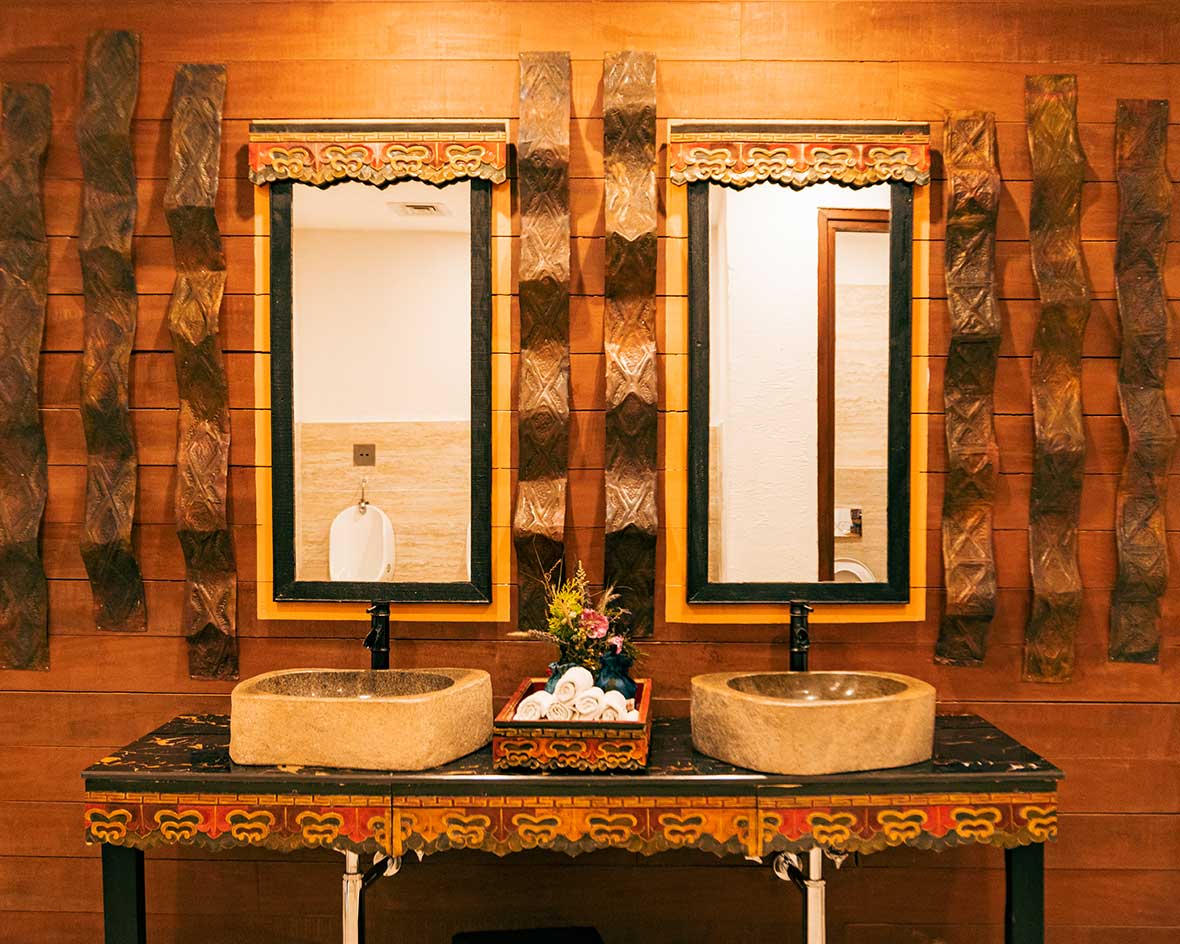
This being a Bensley hotel, it’s complete with your own Bensley Butler and world-class service, but the local and personal touches are everywhere—from the ceilings dotted with lumber of Mustang housing and the Tibetan mantras literally written in the walls to the paintings made by Bensley himself in the bathroom.
But what’s best about design is the whimsy: the cushions that line the halls that look almost like candy, the yak skin over the mini fridge, the burnt sienna fittings. The room itself functions as a little gallery for the likes of Robert Powell and Dhwoj Gurung.
The rooms, all 45-square-meters, are a study in the wild mind of Asia’s star designer who is always madcap—never capricious.
Drinking and Dining
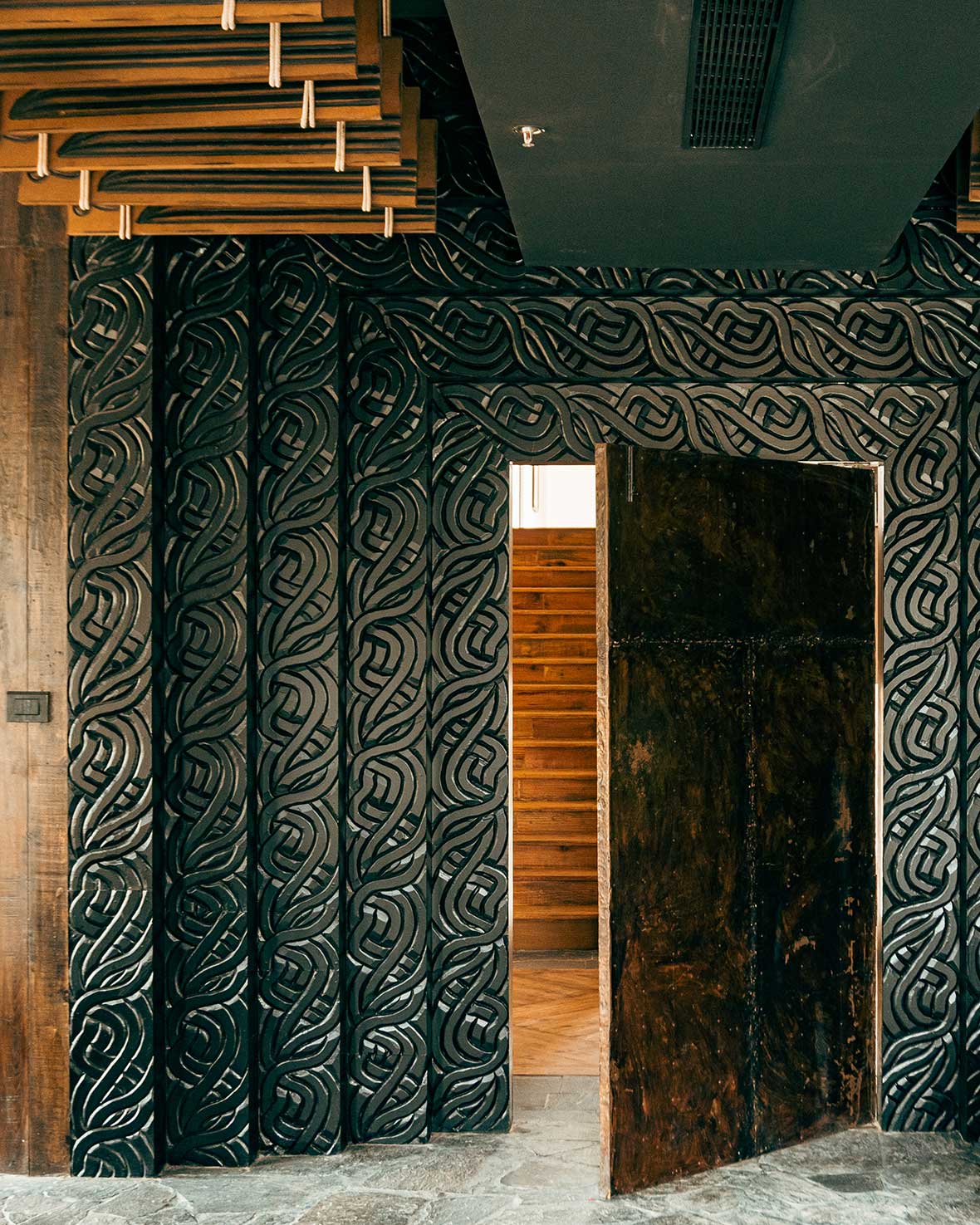
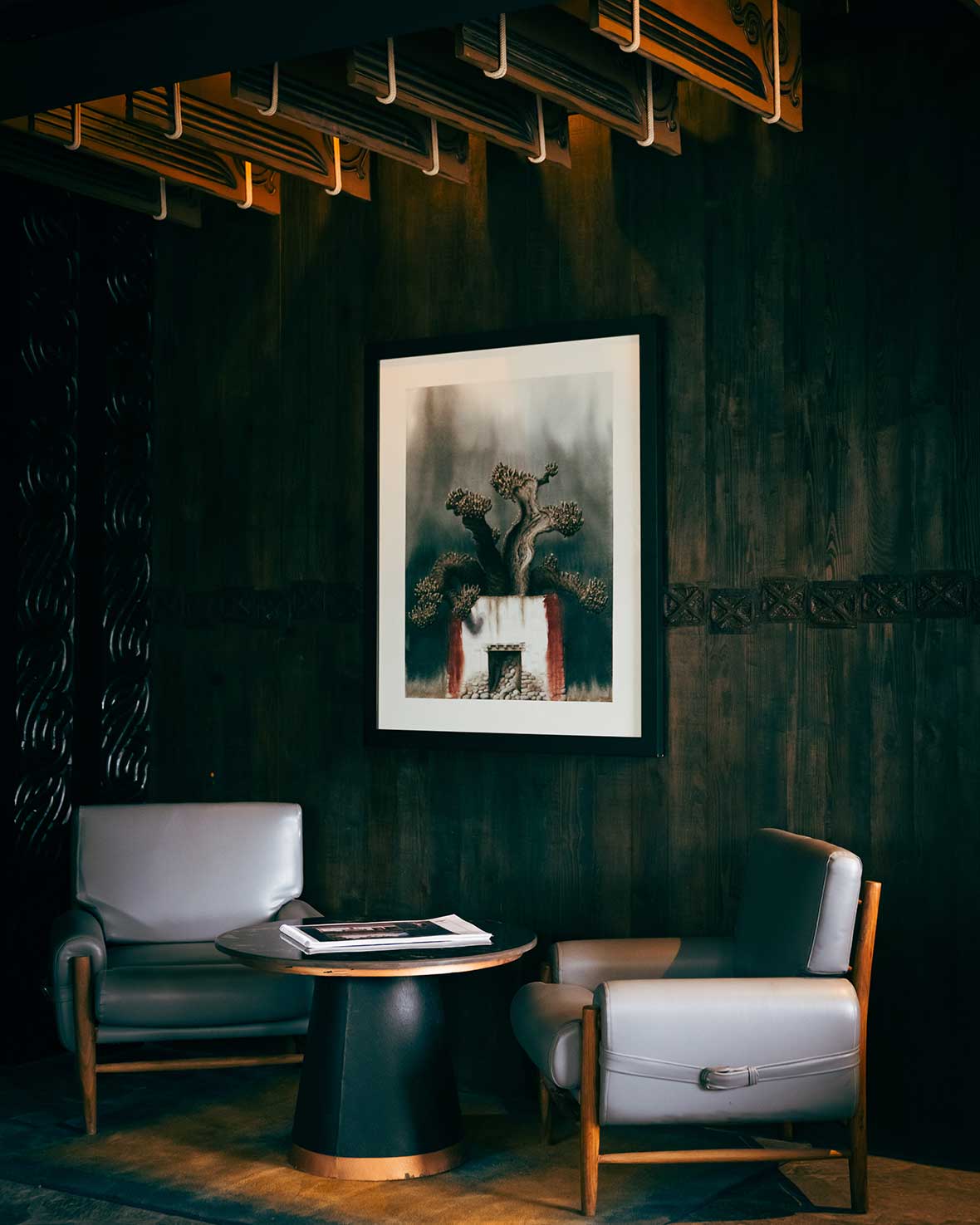
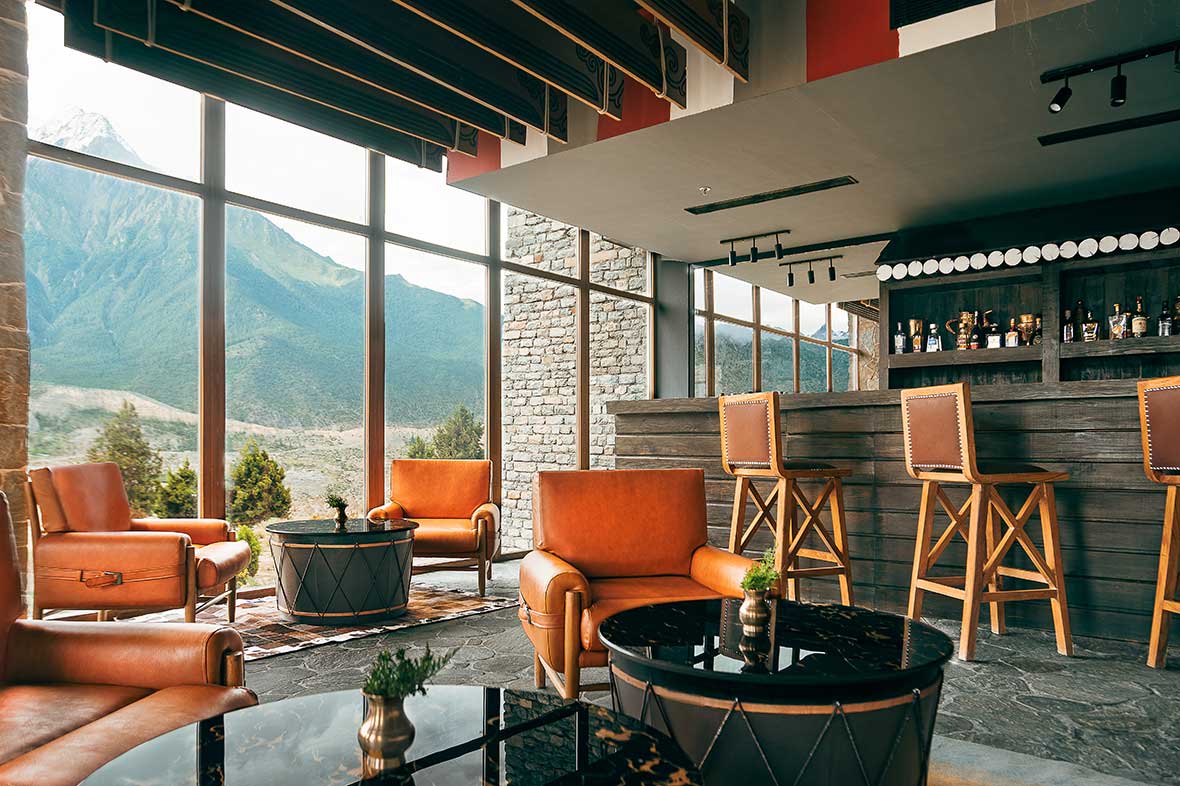
Nilgiri Restaurant is run by Chef Krishna Subedi. Chef Krishna might be able to boast that he’s the first chef to create a tasting menu in Mustang—perhaps one of the few in the world more than 2,700 meters above sea level.
Things are different here in the mountains. Even with the resources of Shinta Mani, there’s a focus on sustainability here that matters. Diners will find some of the five-night dinner rotation at Shinta Mani Mustang to be a bit fruit and veg heavy.
There’s even a dish that looks like it’ll be Hokkaido scallops that turns out to be bacon-topped radishes, but the culinary wizardry puts these regional flavors together in a way no one else in the region can.
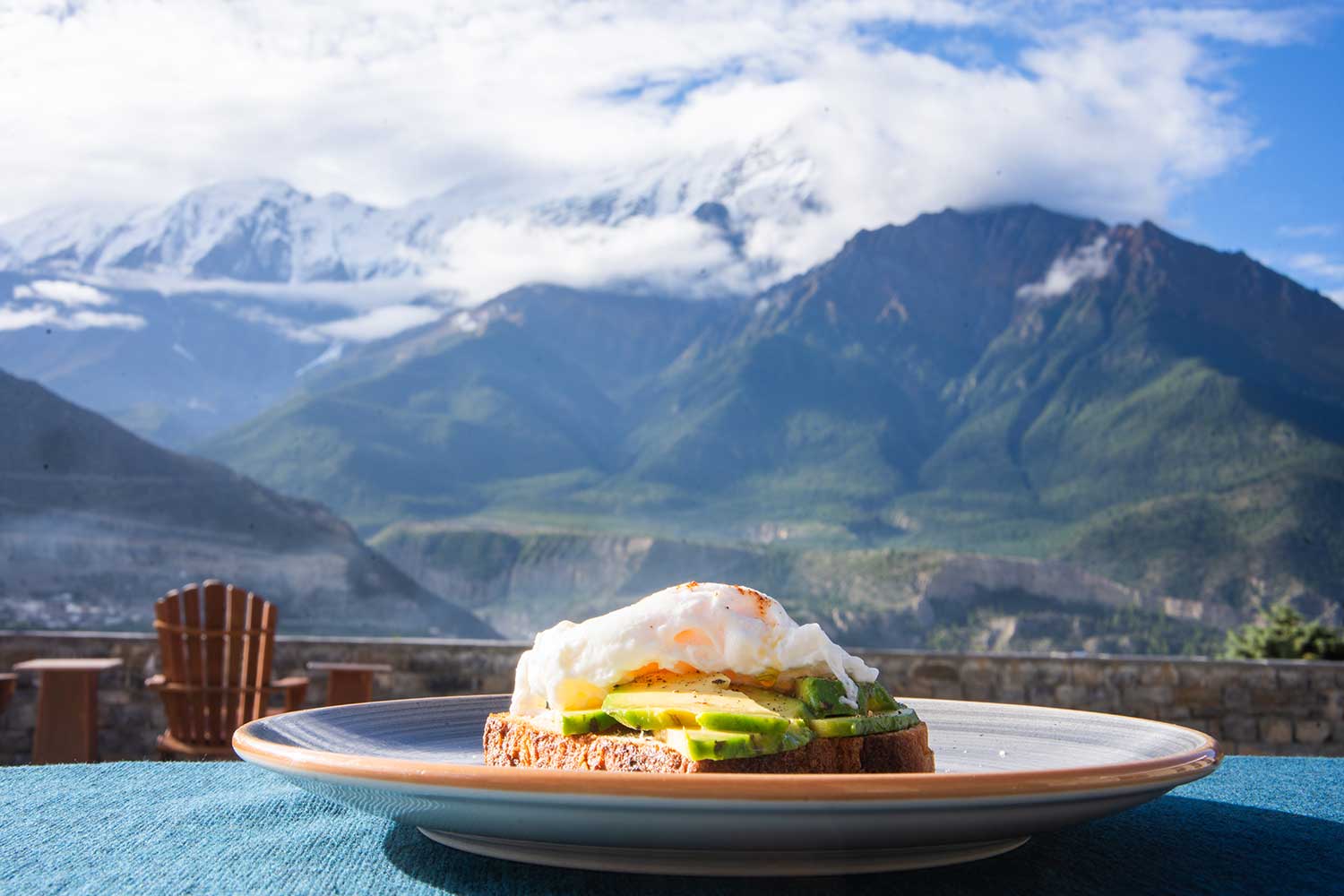
The design of this dining space is warm and features Bensley-esque design eccentricities in the ceiling with the designer’s patented thick, parallel lines, and there’s a map on the wall to imagine the next morning’s adventure.
After dinner, visitors can check out the fully stocked Aara Bar for a nightcap of whiskey and beer amongst the yak-skin covered lamps. But remember to take it easy at this altitude.
The real treat, however, is when you wake early the next morning to an alfresco breakfast in the company of the world’s largest mountain range. The peaks are often most visible in the morning, and outside visitors will find vista-facing chairs ready for you to enjoy the panorama. Avocado toast with some of the world’s most stunning mountains? Yes please.
Amenities and excursions
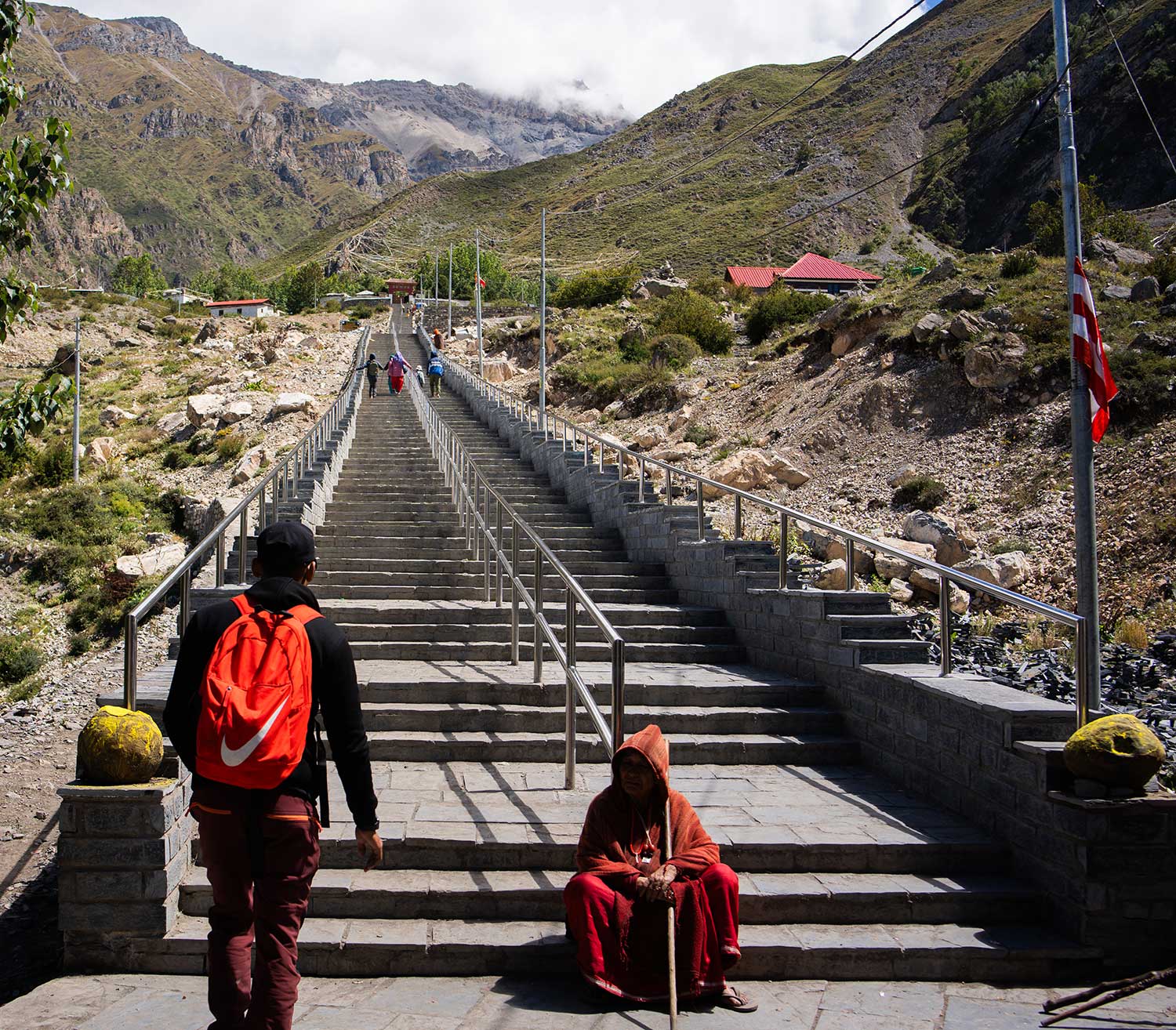
Just a few kilometers away, visitors will find a mix of reliable gravel roads and even black top to some of the region’s best day trips. This is an adventure playground of treks, celebrations, and unique cultural experiences. For all of that, Shinta Mani has a stable of experienced guides for all manner of excursions.
Key among the trips offered by Shinta Mani Mustang is perhaps one of the most famous temples in Lower Mustang: Muktinath. Holy to both Buddhists and Hindus, this temple is a bucolic drive through the countryside past the likes of the photogenic Kagbeni and Jharkot to a popular temple 3,700 meters above sea level.
This is one of only 108 Divya Desam temples, holy sites mentioned by the poet saints of the Alvars; 105 are in India, two do not exist in this realm, and one, only Muktinath, is in Nepal.
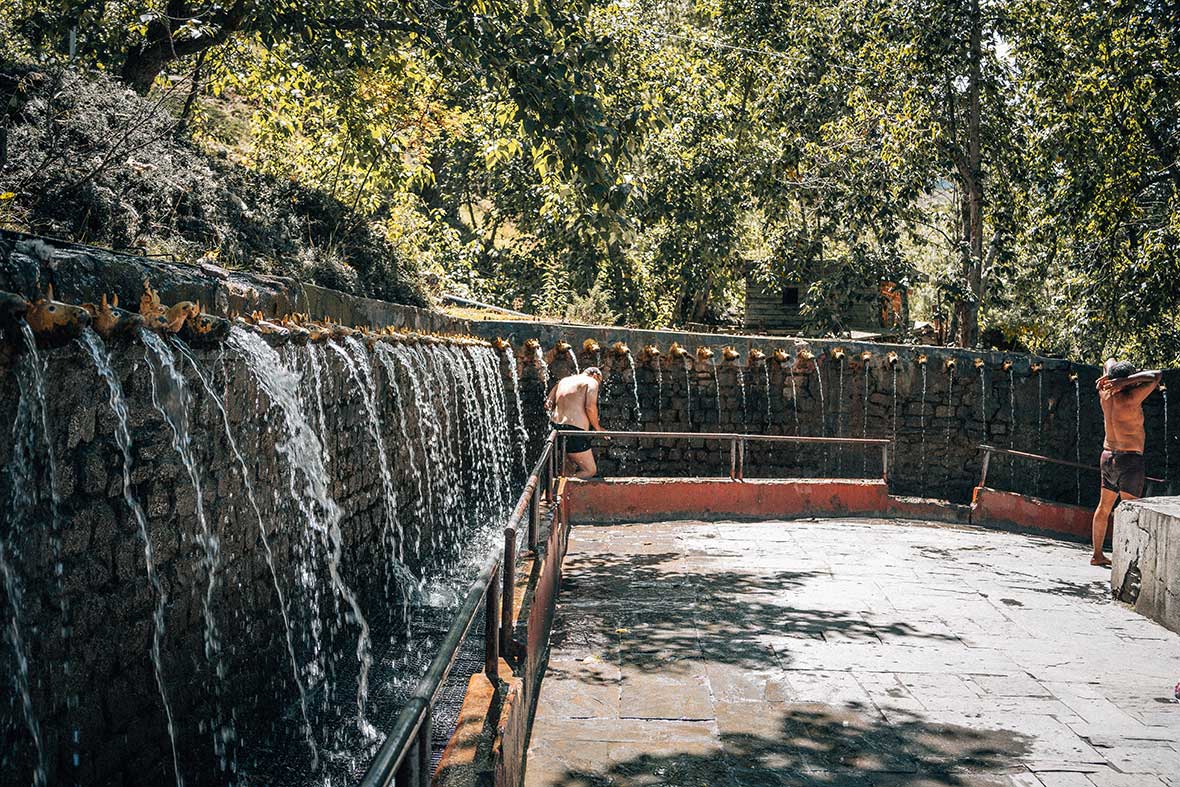
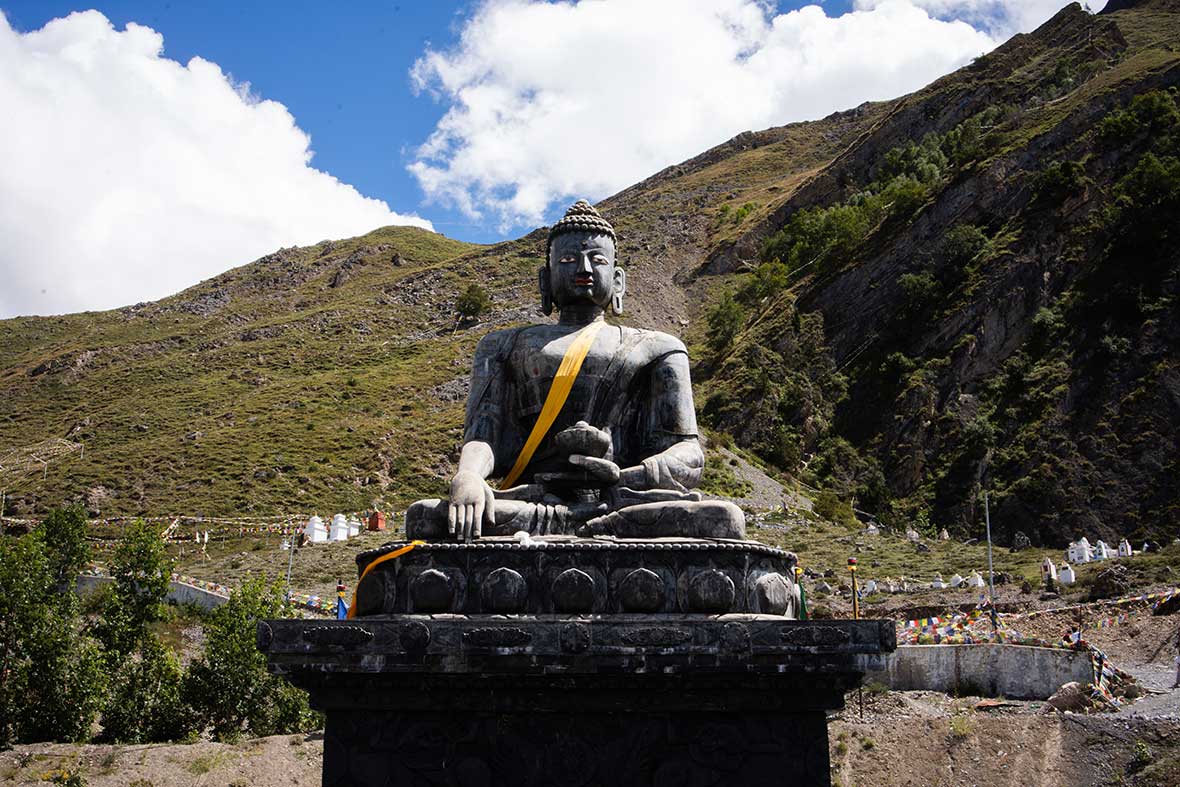
The significance to the number 108 will become apparent to those who decide to undergo the pilgrim’s passage; put simply, you strip down and walk under the 108 bull face faucets gushing glacially cold water, cleansing you of sins. Afterward, visitors dunk their heads under the somehow even colder waters of the outer courtyard, ridding themselves of bad karma with three dunks; then, you do it again in another pool to build good karma.
To the Buddhists, this spot is said to have hosted Guru Rinpoche, the eighth century founder of Tibetan Buddhism, on his way to Tibet, and there is a central Buddha statue for worshipers and photographers.
The holiness of this site is matched only by its drastic pastoral beauty. Horses carry the faithful and tourists alike up the steep entrance, stairs are filled with dedicated pilgrims, and the courtyards are surrounded by the jagged majesty of life at altitude.
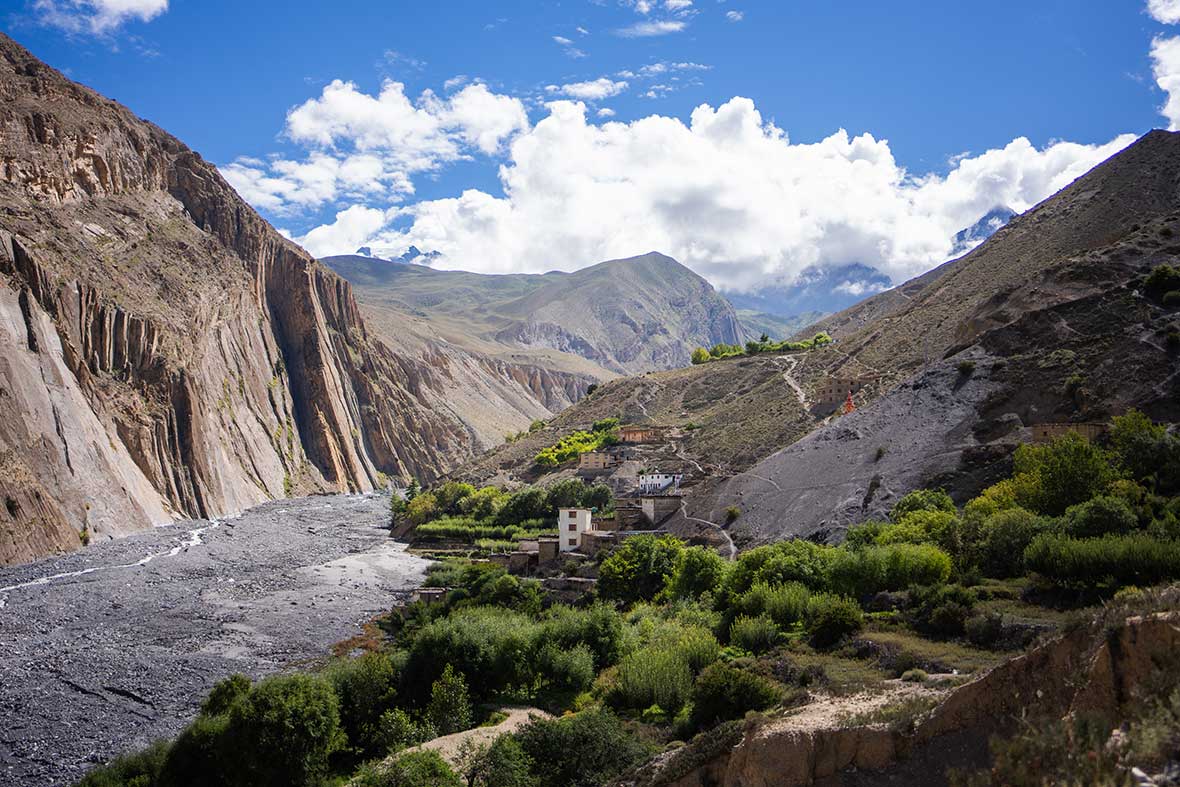
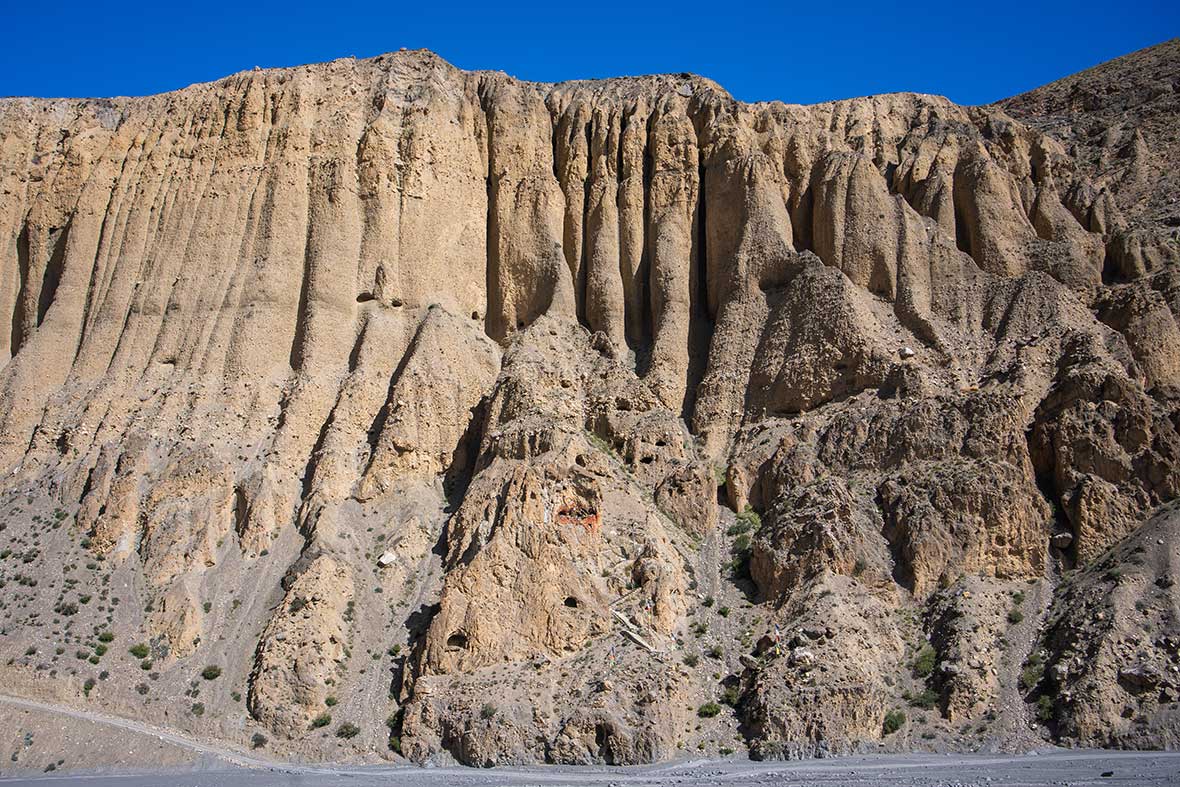
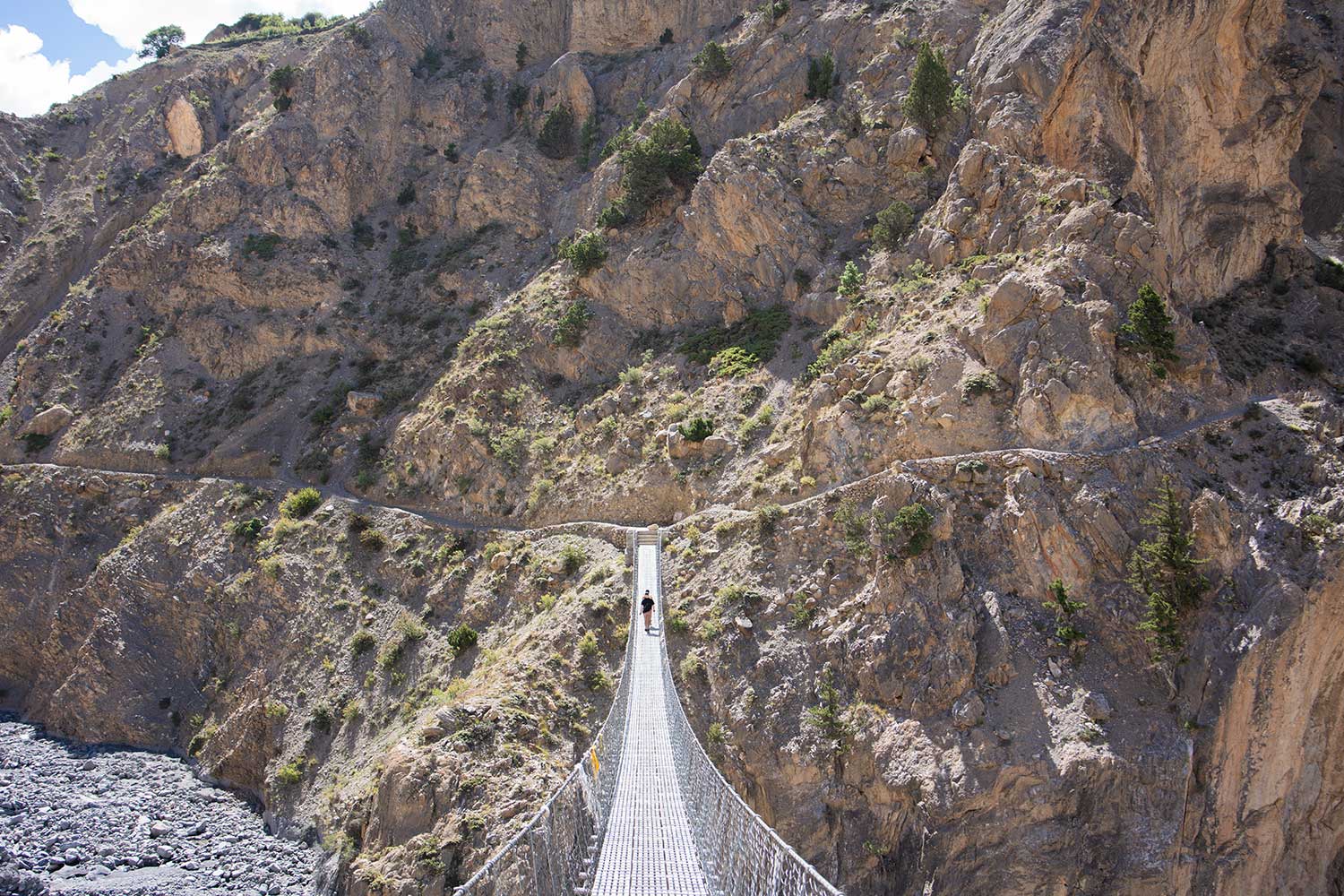
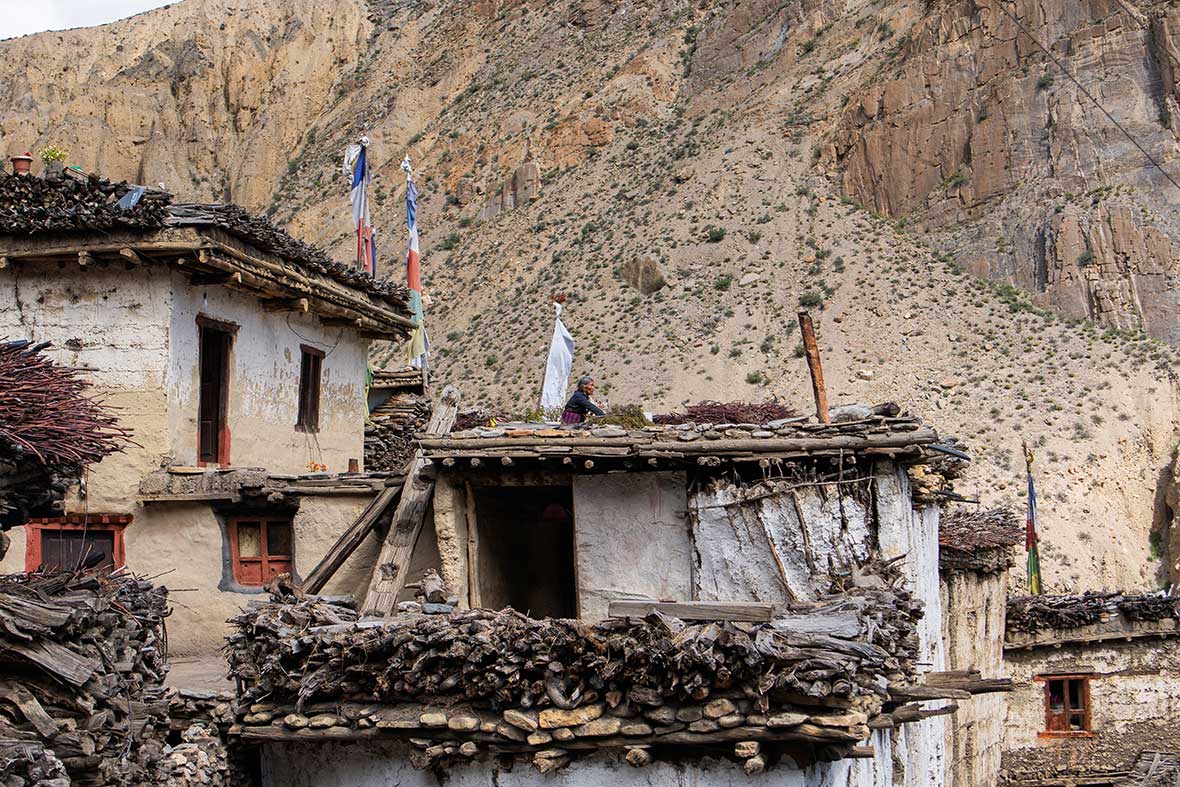
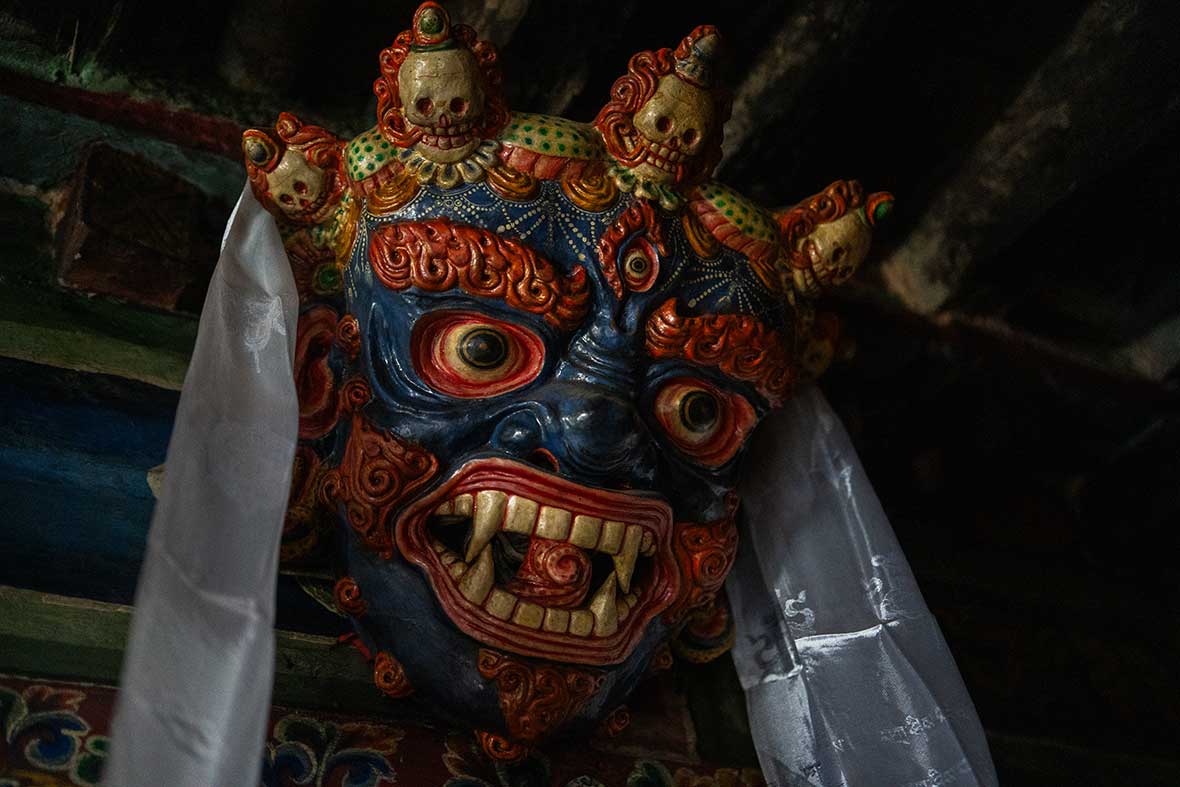
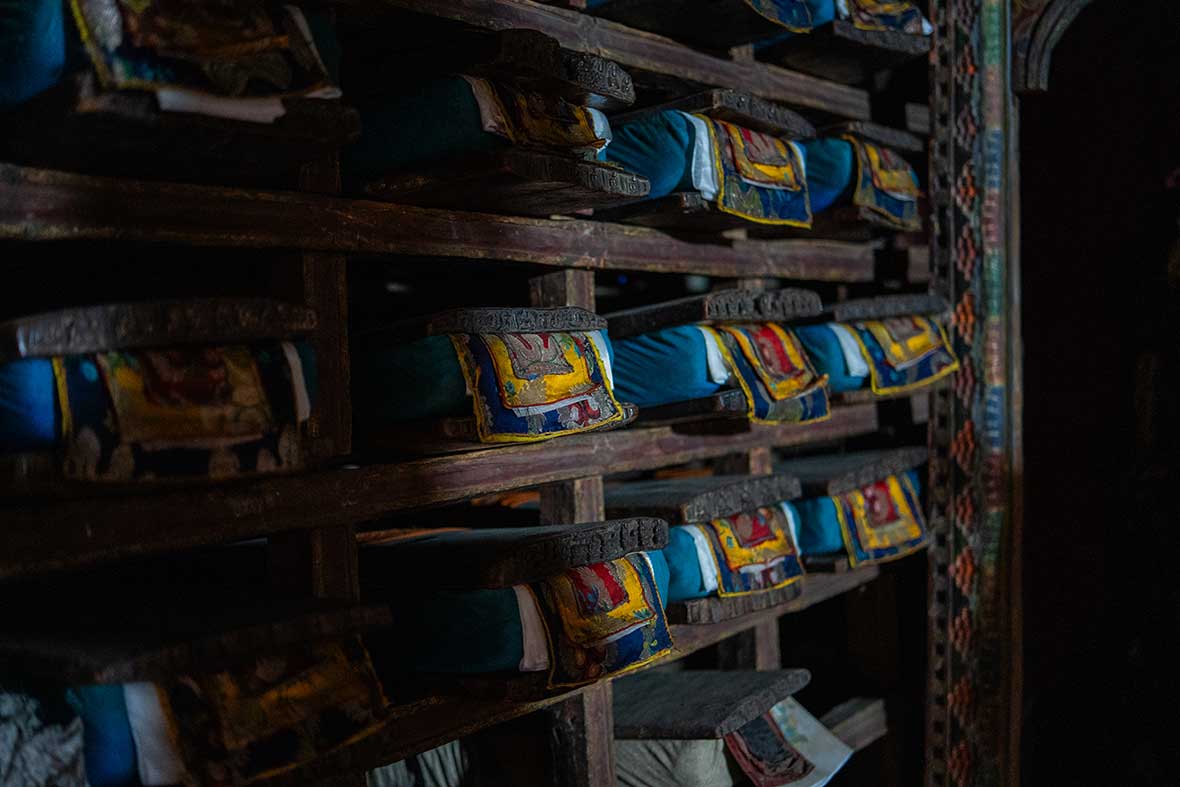
For those more into a day hike, try the ancient Bon town of Lubra. Bon is said to predate modern Buddhism and includes elements of animism, driven almost to extinction in the 11th century. You turn down the gray wastes of an empty Kali Gandaki and go on foot to the town, a picturesque 12th century village boasting a little more than a dozen families. To the photographer, the town provides landscapes from every angle.
To get there you will have to cross one of the many suspension bridges that are the lifeblood connecting the two sides of any Nepal valley and make a short climb to the village itself. Along the way you will see the mysterious Mustang caves carved into the cliffs. Human remains at some of these sites go back more than 2,000 years, but history has seen them used for everything from meditation chambers to shelter for bandits. These structures seem so naturally part of the scenery that they look almost like they were built by massive swifts building nests in the side of the mountains.
The origins of Lubra itself date back to Lama Tashi Gyaltsen Rinpoche, who was said to have come here and domesticated the local demon spirits and turned them into protectors. At the top of your Lubra climb, you find the small but active Lubra monastery. It’s said the local supporters of the guru turned themselves into animals to be his protector, and revered stones of animal footprints are venerated with rock stupas.
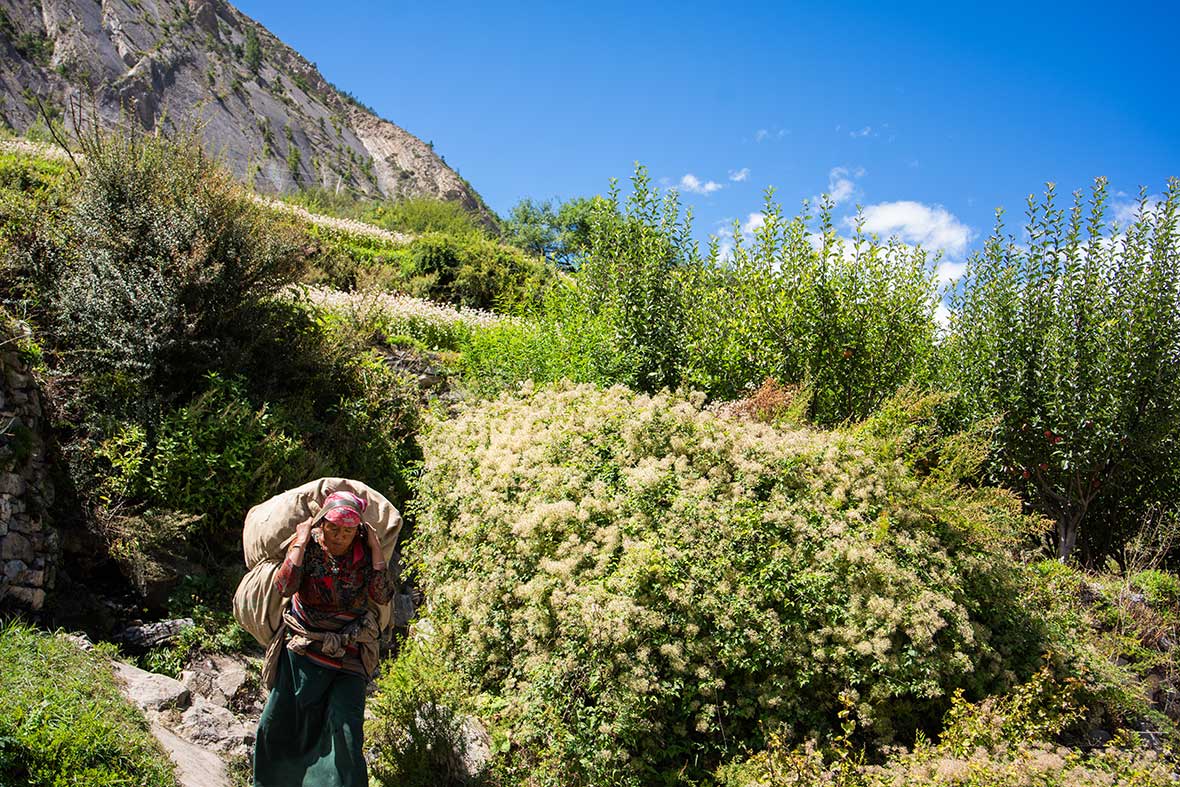
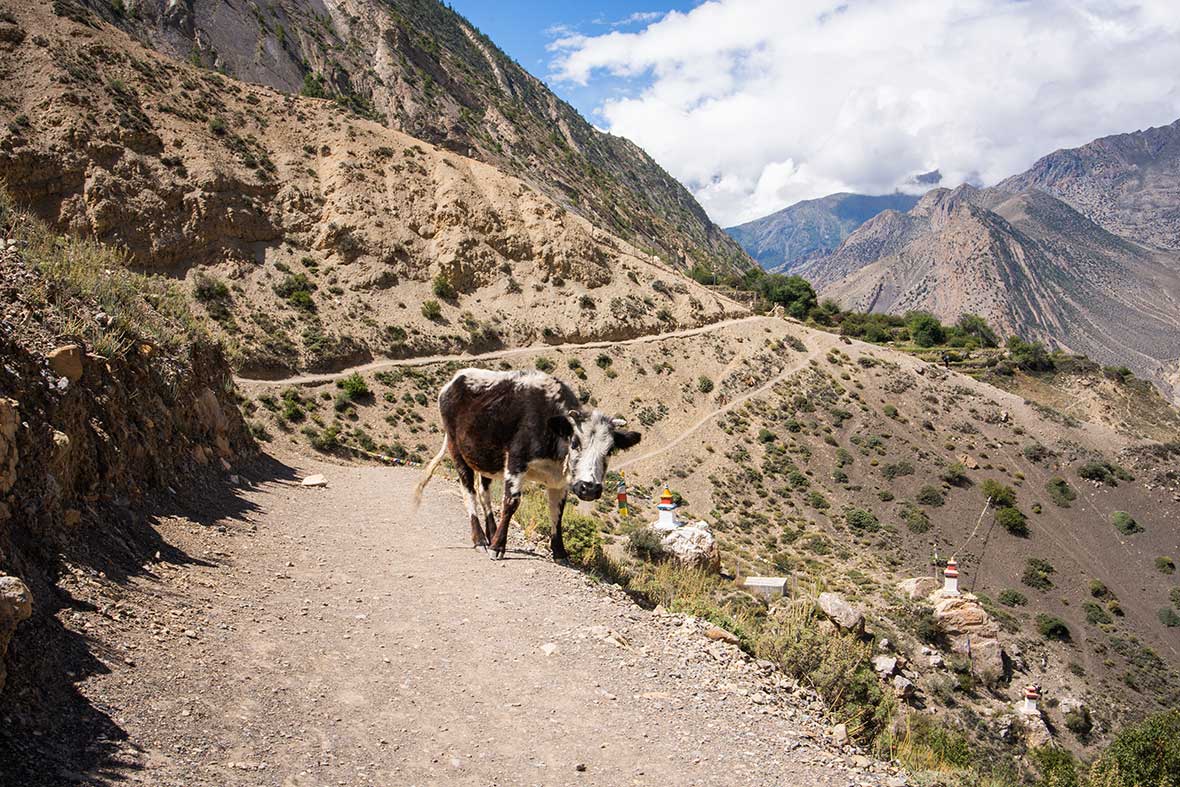
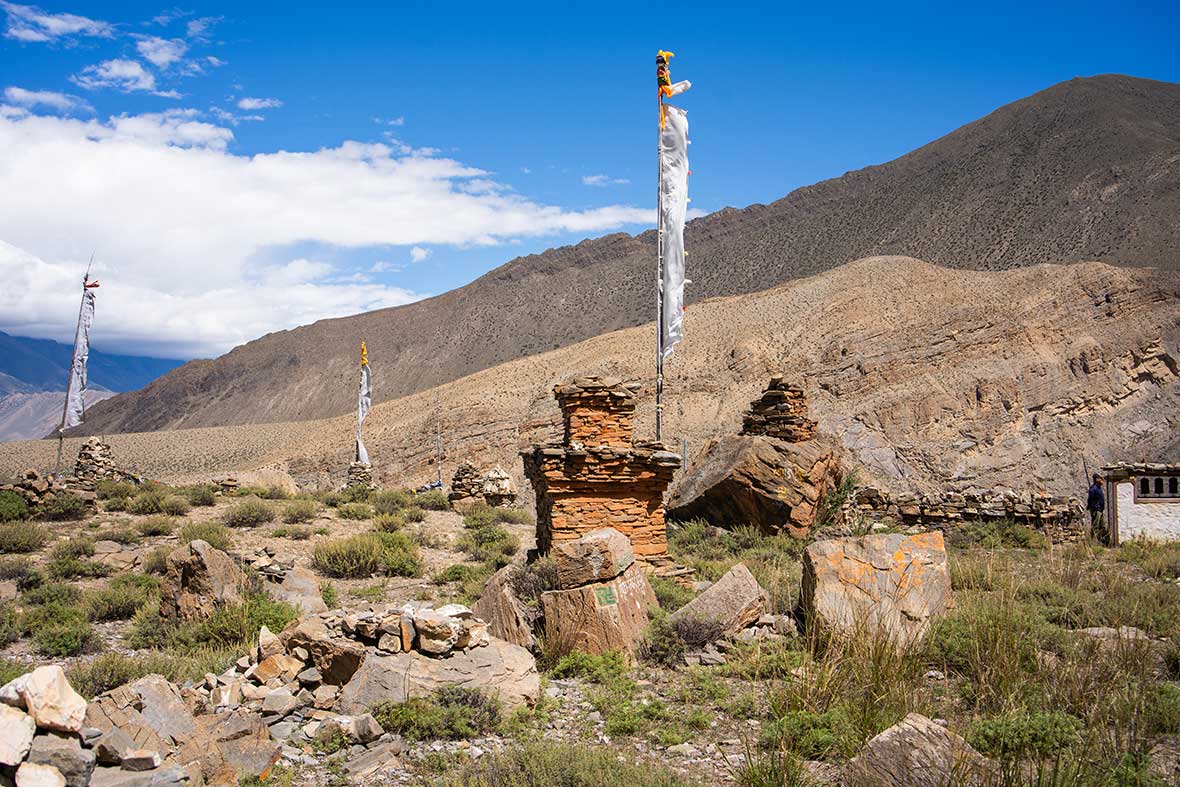
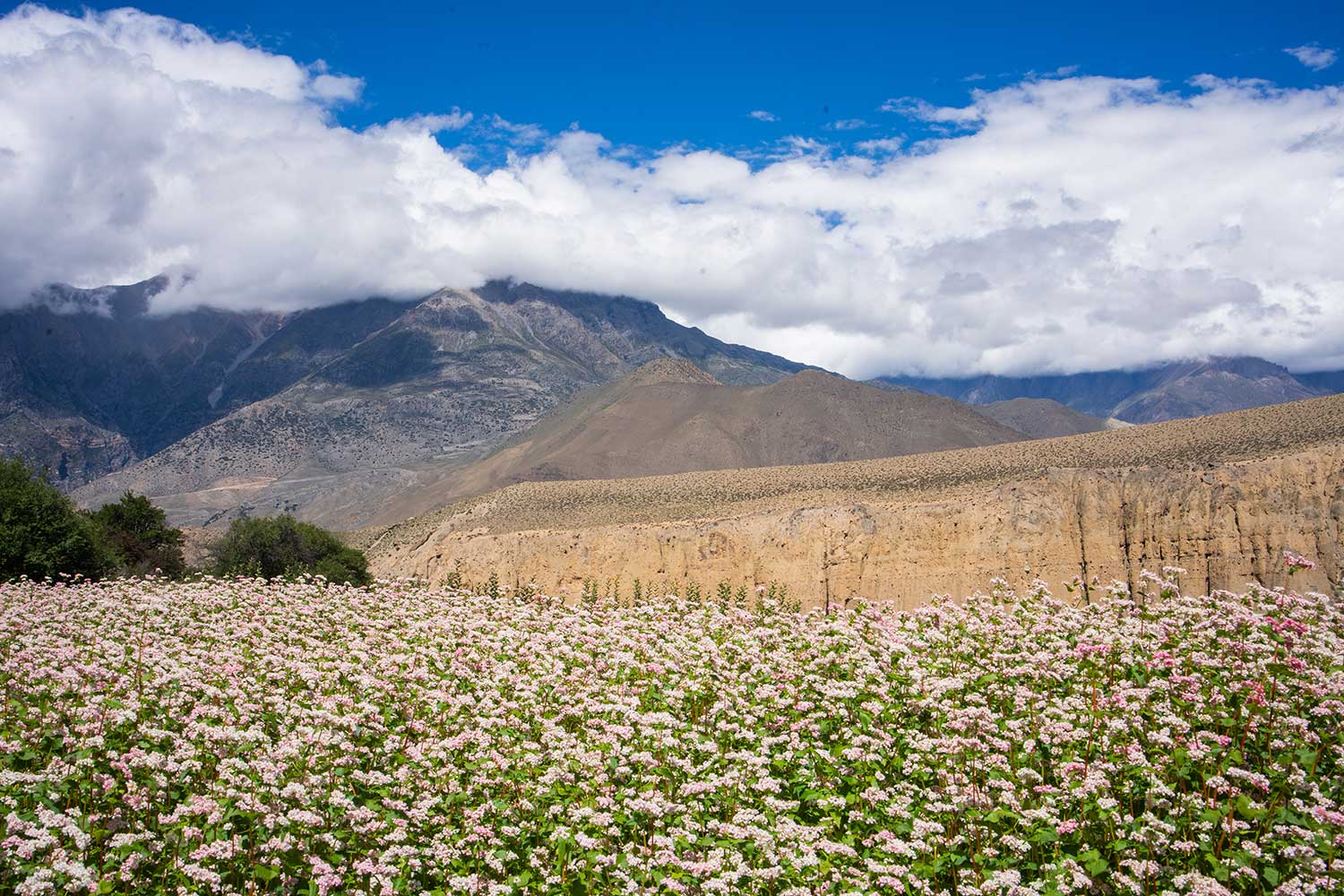
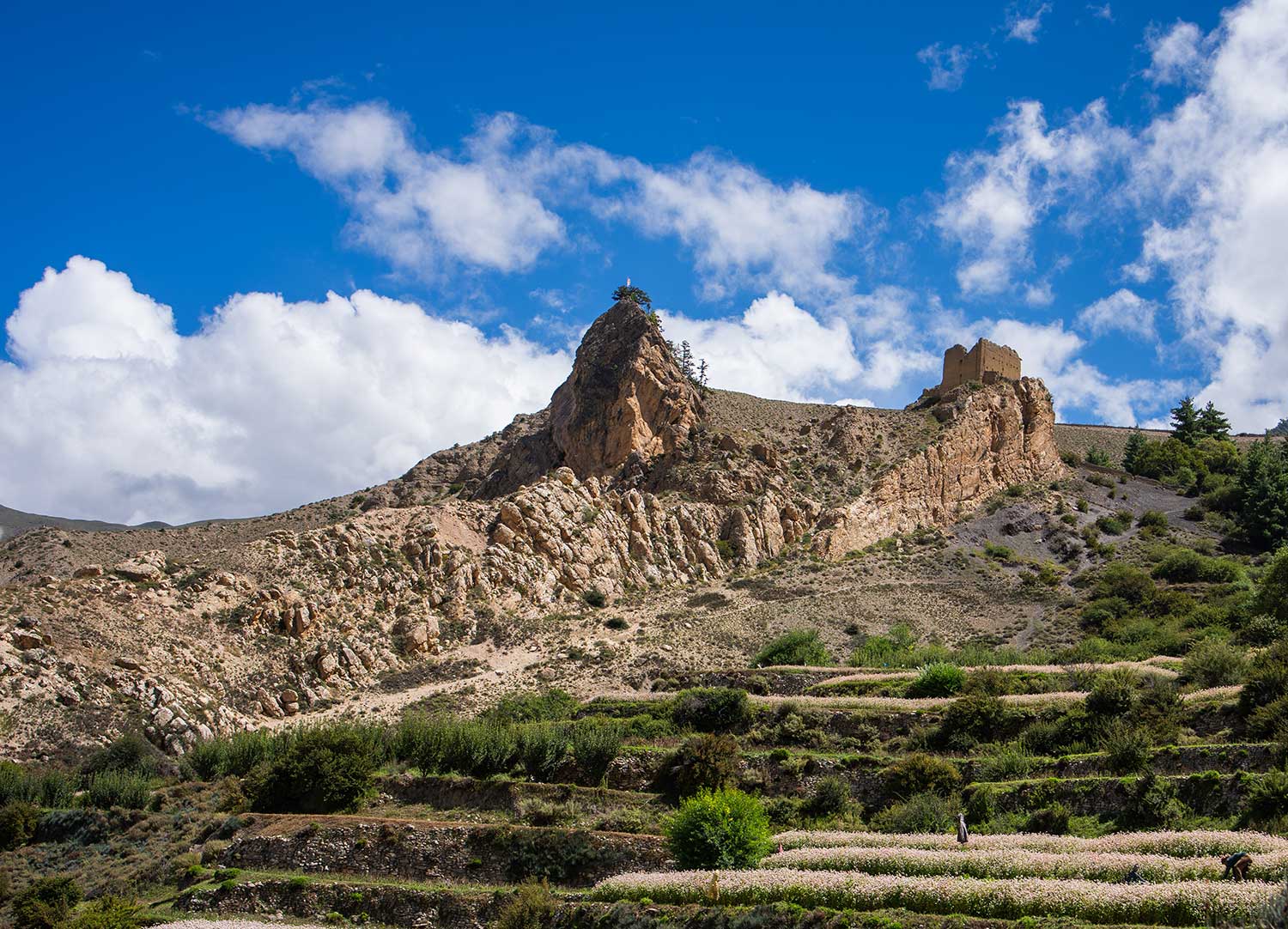
To most, it will be the bucolic scenery of Lubra that stands out. Cows and animals use the same paths as the few trekkers who come here; flowering buckwheat adds a touch of pink to the brutal, dry valley; prayer flags beat so hard in the wind they sound like raindrops; and a one floor monastery adorned with paintings of the lama’s mastery over demons.
Other day trips with Shinta Mani include the famed Marpa Monastery just an hour away from the property, village visits to the likes of Kagbeni and Jharkhot, and customizable treks. For the fitter traveler, there’s mountain biking, horseback riding, and even pre-breakfast hikes on the property to get the most out of the sunrise.
For some, though, rather than a hotbed of adventure and scenery, Lower Mustang is a land of spirituality. For that, Shinta Mani has you covered. Not only is there a world class spa with an 11th generation practitioner in Sorig traditional healing, Tsewang Gyurme Gurung, but there resort also caters to yoga, physical therapy, and meditation needs.
Formerly a frontier for trekkers and pilgrims, Jomsom has become more accessible—and not just in the sense that a helicopter will drop you right at the Shinta Mani Mustang entrance. This new property is an example of how natural beauty, design, and travel can make somewhere better.
